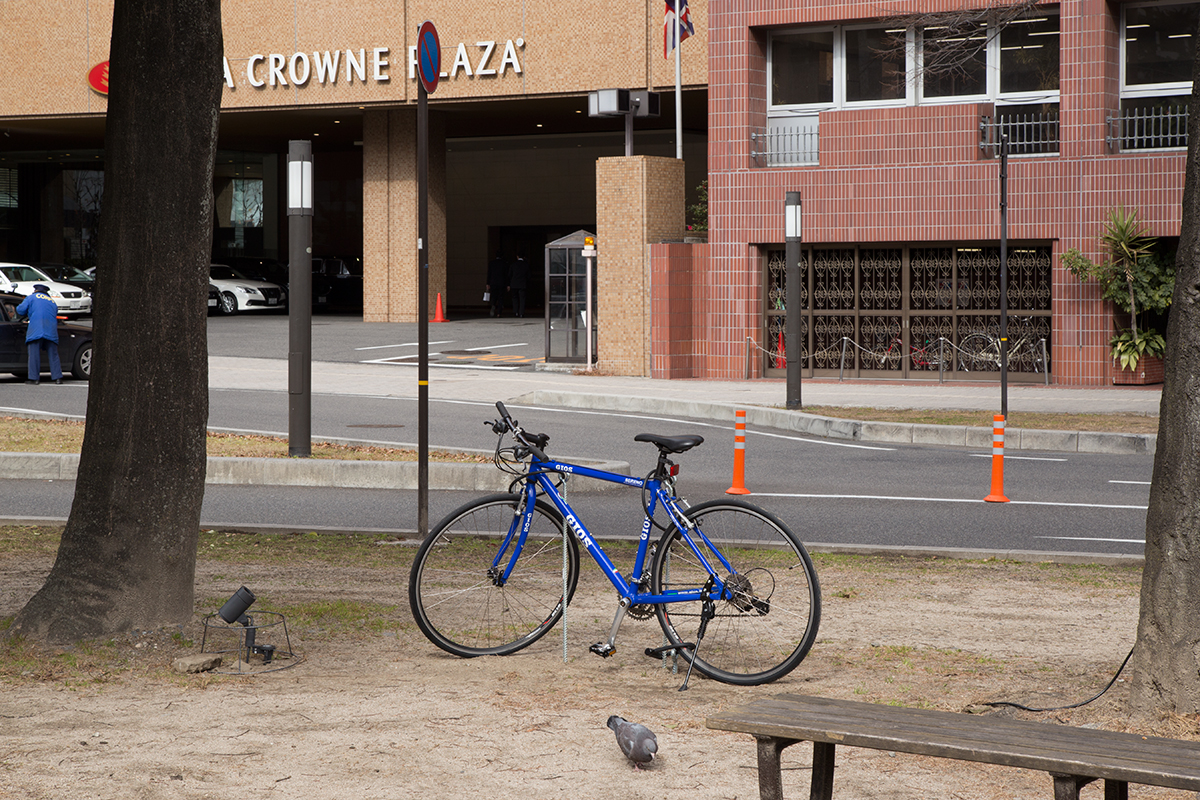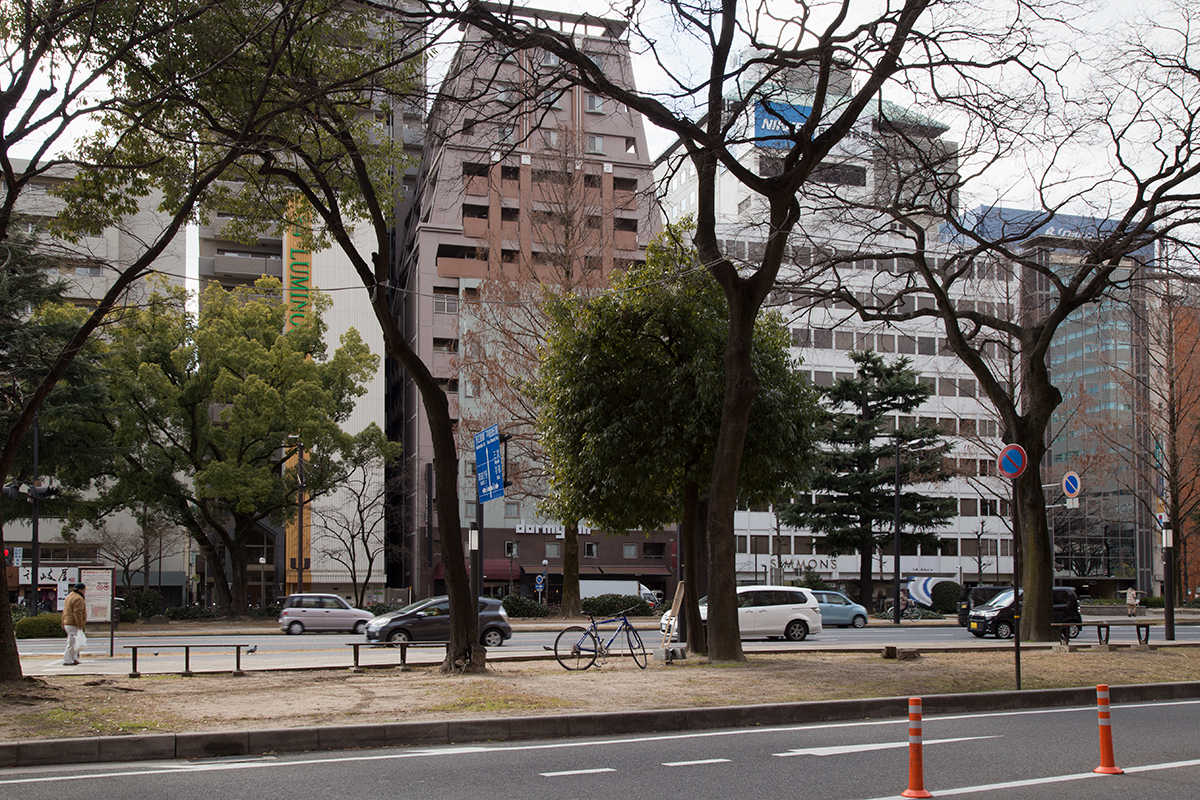彼は通りへ降りるために自転車を停めた


The exhibition space given to me has a vent which is like a small monolith. This hole inspired me to create this work. It seems that ventilation holes and artworks share the same structure in the way they connect different hierarchies. The vent connects the space, and the artwork connects the time.
This work originates from a short essay, "Rue and Human", which is listed in the book of the photographer, Chihiro Minato, Walking in Paris. The quotation below is the part which I particularly emphasize.
“One historian plainly says that "street" is a proper place to learn history. If there is a need in history for another kind of knowledge other than the knowledge obtained by "reading" the characters written on the blackboard or book, the street must be a place for that. As the crowd walks, it shares experiences that have not been written yet” - Walking in Paris (Chihiro Minato, 2011, 170: NTT Publishing).
Walking on Peace Boulevard. How many people have walked on this street so far? We are currently walking on the same way where all the pedestrians in the past also walked. Those are countless absentees whom we cannot see with our eyes.
"He" who parks the bicycle at Peace Boulevard and walks along the street with his own feet is one of such absentees. In the name of a kind of theatrical play called “art”, If you recognize the existence of the absentee whom I invited, you should also be able to invite to the present time and to the street all the people who have walked this very street in the past. My work is a modest device for that.
Walking with countless absentees on Peace boulevard. And as the crowd walks, it shares experiences that have not been written yet. This might be just an illusion. However, if something called society or history is also a sort of theatrical illusion, this illusion, which my work evokes in your head, even if it is only for a moment, should also be worthwhile. I think like that.
私に与えられた展示スペースには、小さなモノリスのような通気口があります。私はこの通気口に触発されてこの作品を制作しました。通気口と作品は異なる階層の間をつなぐという意味で同じ構造を持ちます。通気口は空間を、作品は時間をつなぎます。
この作品は、写真家である港千尋氏の著書「パリを歩く」に収録された「リュと人間」という短いテキストを起点として制作しました。起点とするにあたり、そのなかでも特に重視した箇所を以下に引用します。
【ある歴史家は端的に、「通り」とは歴史を学ぶための立派な場所であると言っている。もし歴史に、黒板や本に書かれた文字を「読む」ことで得られる知識とは別の種類の知識が必要だとすれば、確かに通りはそのための場所に違いない。群衆は歩きながら、いまだ書かれていない経験を共有してゆくのだ。】- パリを歩く(NTT出版)P170より
平和大通りを歩く。今までにどれだけの数の人たちがこの通りを歩いたのでしょうか。今現在の私たちは、過去のすべての歩行者たちの歩行の上、目では見ることができない無数の不在者たちの歩行の上を歩いています。
平和大通りに自転車を停めて、自らの足で通りを歩く「彼」は目で見ることができない不在者のひとりです。もし仮にあなたが、私によって招かれたその不在者の存在をアートというある種の演劇の名のもとに認めることを許すのであれば、彼だけでなく過去にこの通りを歩いたすべての人たち、いまは不在者であるすべての人たちの存在を過去から今につなぎ、通りに招くこともできるでしょう。私の作品はそのためのささやかな装置です。
無数の不在者たちと平和大通りを歩く。そして群衆は歩きながら、いまだ書かれていない経験を共有する。これはただの幻想でしかありませんが、社会や歴史と呼ばれるものでさえある種の演劇的な幻想であるとすれば、私の作品がほんの一時あなたの頭のなかに立ち上げることができるかもしれないこの幻想にも価値がある。そんなふうに考えています。